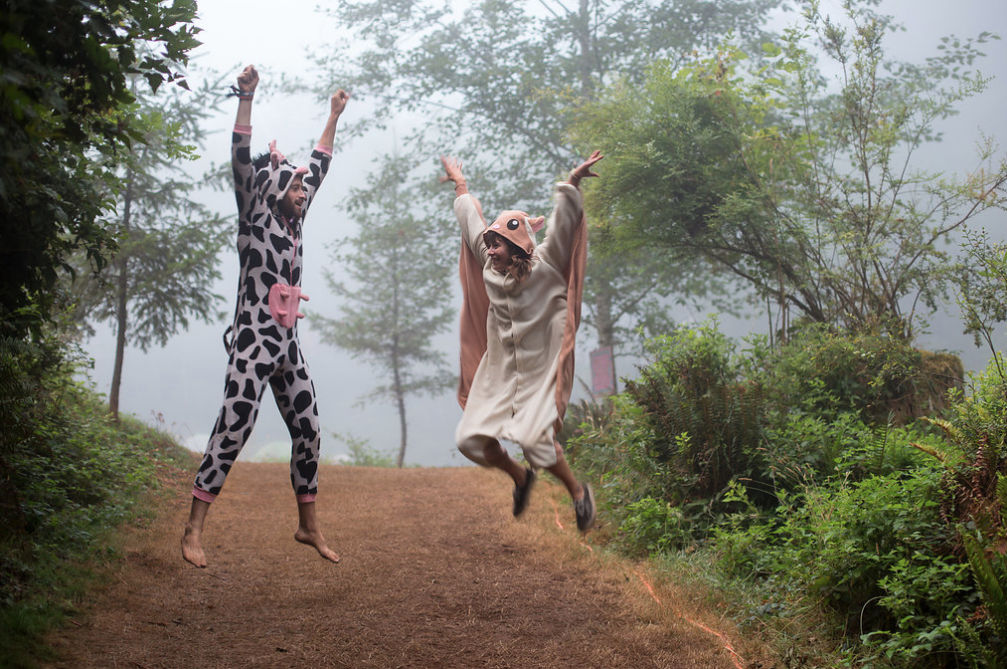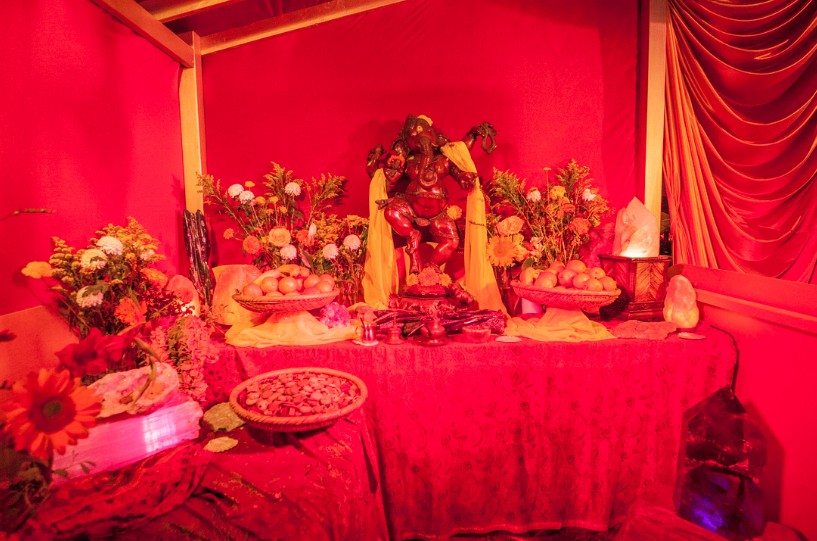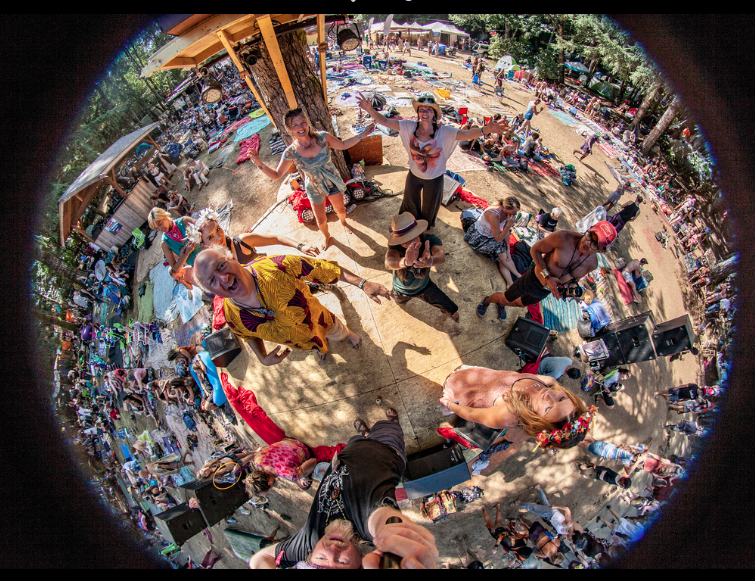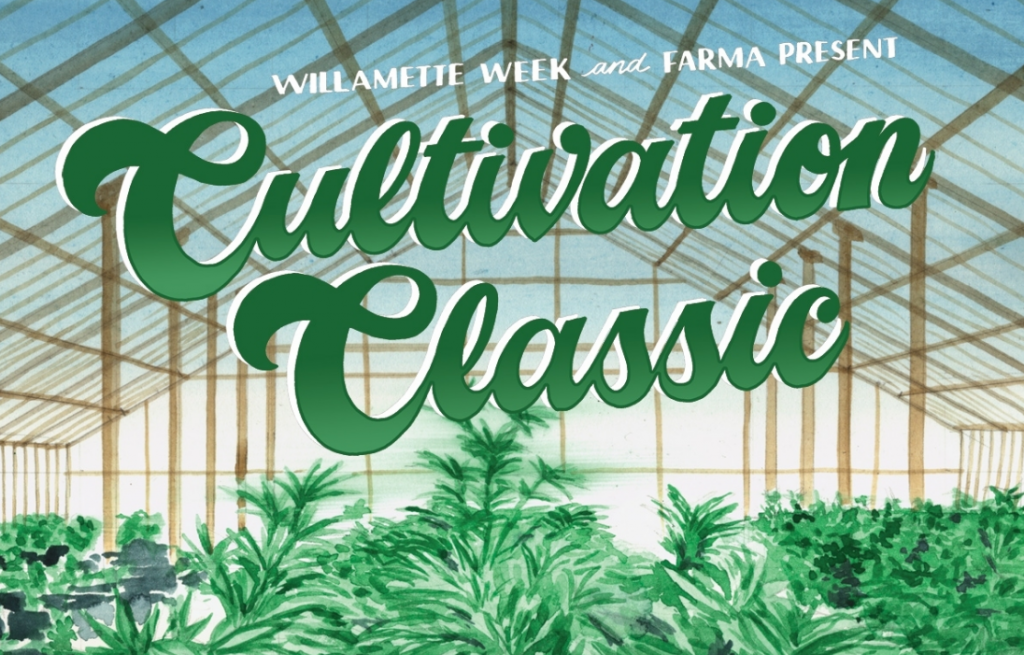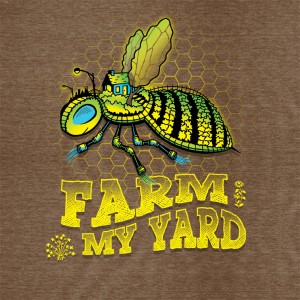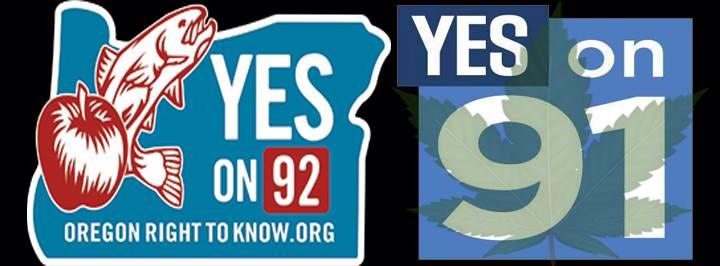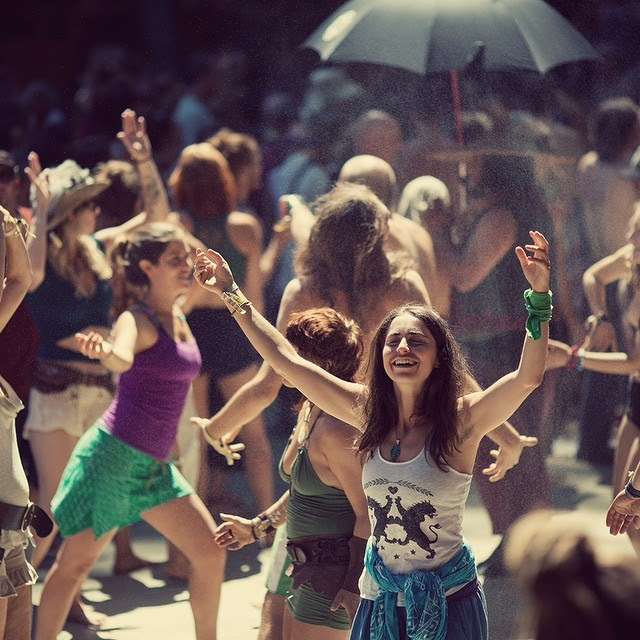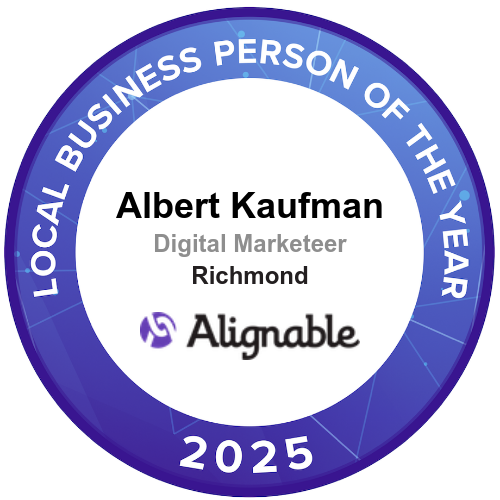Beloved 2018
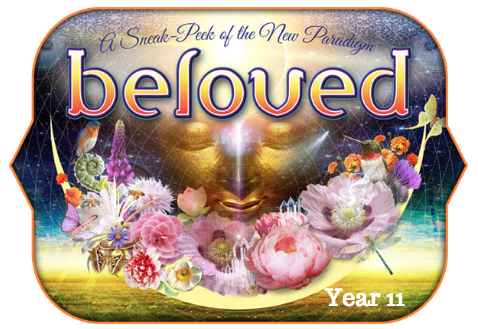 This was Beloved Festival‘s 11th magical year. If you know me at all, you know that 11s are a big part of my life. From my newsletter (The Eleven) to my birthday (the 11th of May) – 11’s are key. You may have also seen me raise my hand when the question “who’s here for the first time?” gets asked. That’s another story (beginner’s mind…). So, one thing for me that was fun about Beloved this year is that I’ve been there since the beginning and I also try to approach things as if I’m there for the first time. I was scheming to make a t-shirt with the Beloved logo on one side with the year 11 on it and on the other side the slogan Beloved Virgin (1st year!), but never got around Tuit. Speaking of t-shirts, some of the stage crew wore black t-shirts this year with the word Belivid in bold white letters on them. Striking and potent.
This was Beloved Festival‘s 11th magical year. If you know me at all, you know that 11s are a big part of my life. From my newsletter (The Eleven) to my birthday (the 11th of May) – 11’s are key. You may have also seen me raise my hand when the question “who’s here for the first time?” gets asked. That’s another story (beginner’s mind…). So, one thing for me that was fun about Beloved this year is that I’ve been there since the beginning and I also try to approach things as if I’m there for the first time. I was scheming to make a t-shirt with the Beloved logo on one side with the year 11 on it and on the other side the slogan Beloved Virgin (1st year!), but never got around Tuit. Speaking of t-shirts, some of the stage crew wore black t-shirts this year with the word Belivid in bold white letters on them. Striking and potent.
My friend Matthew Burns did an interview with me on the last day of the festival this year. If photography is your thing – Carlton Ward took a great collection of photos this year – check them out (any photos that are published here are from him!). And, Maggie Jane Cech did these beauties!
As I mentioned, I’ve been attending the Beloved Festival for many years. Each year is different – depending on the site; weather; who I’m camping with; relationship status (I’m single and looking!); who else shows up each year; how easy it is to get in and out of the festival; and 100 other factors. That’s also partly why it’s useful to have a beginner’s mind – ie, not expecting that the experience will mirror past experiences saves you from the frustration you might feel when something has changed. And Beloved Festival always changes as we continue to change, too. My first year going I was 46 and now I’m 57 – ha, my life has significantly changed through that time, of course. The way Beloved has changed is a little bit structural – the layout of the festival – but the main change this year felt like an invitation or encouragement by the festival organizers for us all to challenge ourselves to go deeper.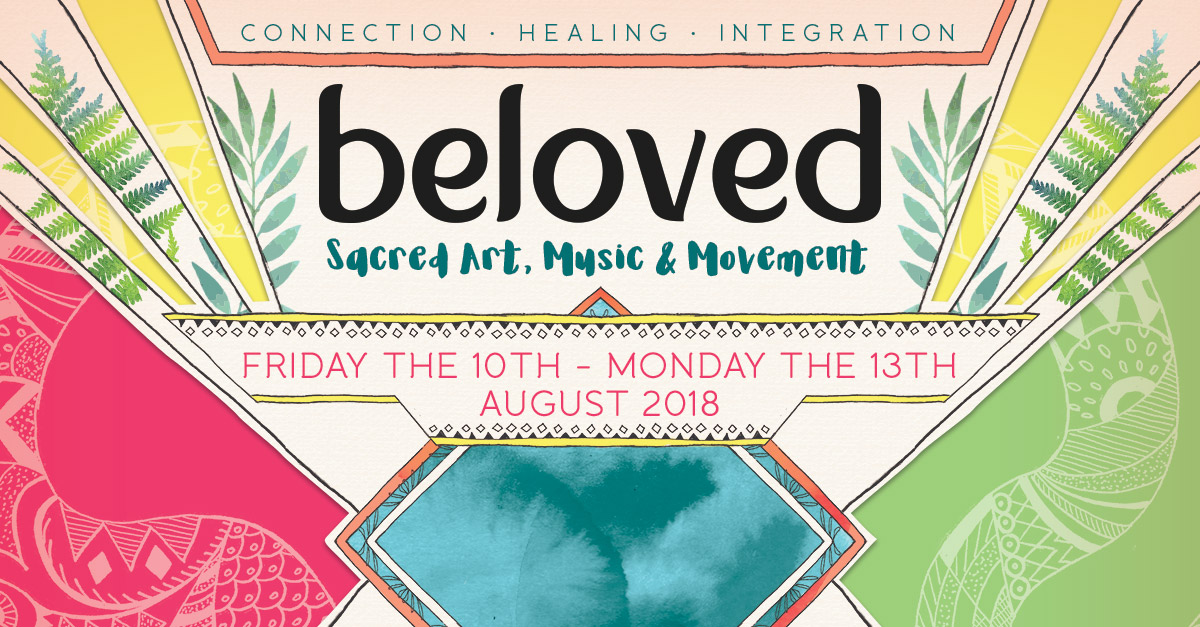
Beloved Festival is full of seekers. People who are passionate about their craft – whether it’s yoga; eating healthy food; personal growth; healthy relationships; learning about and practicing consent culture; music; dance and many other passions are well represented. My sense this year was that there was a question in the air: “Are we doing enough personally and as a group to change the world?” Sub-questions around this are: are we doing enough to end racism? Is this event doing enough to be inclusive (the attendees are mostly white, and probably middle class, though class issues are not usually raised at the festival). How can we take the amazing lessons we learn at Beloved and bring them into our lives; our relationships and into the world? This is something I was chewing on a lot at Beloved this year – beyond just digesting my experience – how can we take this event and all that it teaches us out into the world? I know not everyone in the world can attend Beloved – most won’t get a chance to even attend something similar and even if they did, they would probably only take away a relatively small amount of the wisdom that is shared there. For years I’ve imagined a video testimonial/interview booth for people to share their insights during the festival. We’re brought to such a peak state and that would be good to share – I believe it would be a positive influence on the world. This year we were asked to look at our shit – both internal and our actual poop 🙂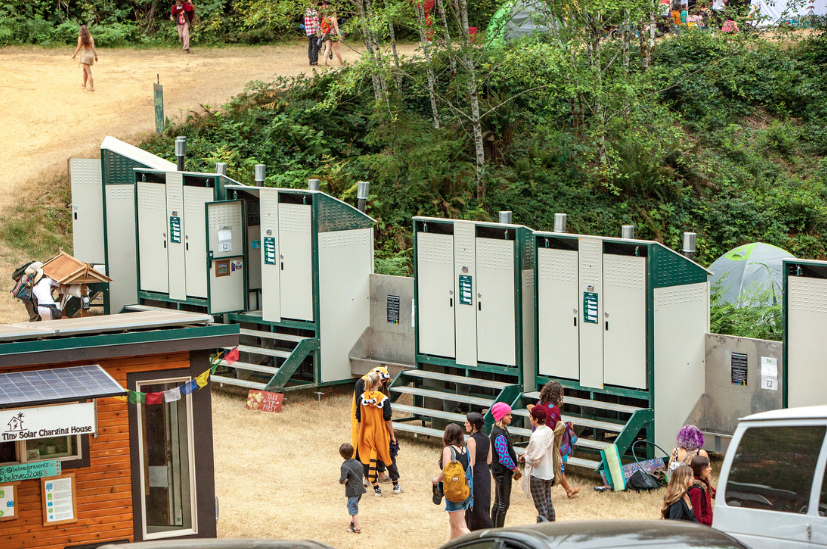
These composting toilets were quite incredible (I believe the compost is left on-site and used to fertilize the property where this event is held. The troughs between the private toilets were for men. Perhaps in future, there will be herinals for women (like the ones at Oregon Country Faire 🙂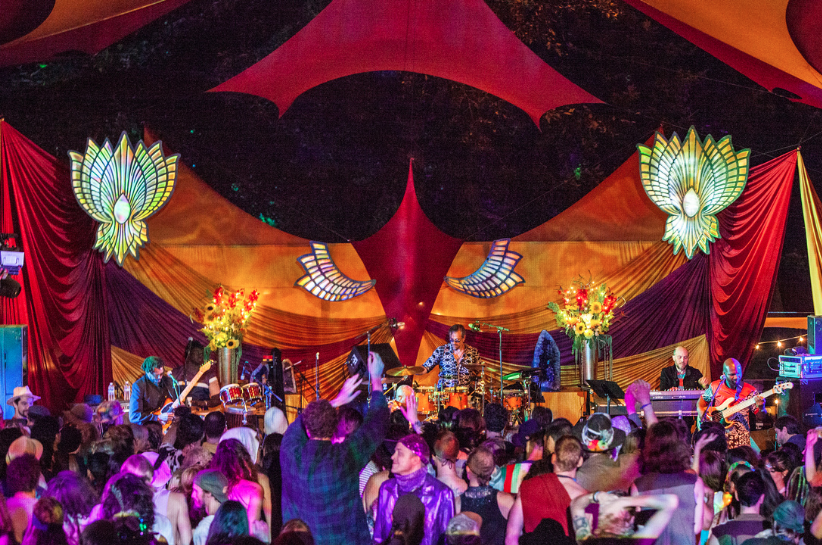
Then, there’s the Beloved Festival by night. One change that I was quite happy about was the return of video mapping of the stage. There was just a light dusting of that this year, but it’s quite lovely to behold. See Carlton’s pictures for more of that imagery. Beloved at night is quite special. There is one main stage and most people are either dancing; having food or wandering to and from their campsites. This makes it a great place to drop in with people and for years I’ve been talking about the festival being my annual men’s workshop. Ie, there’s nowhere to go that’s not in the center of things – so, when you meet someone it’s easy to settle into a longer, deeper conversation.
There is so much incredible intention put into this festival. Everything possible is thought of. In the first few years, some of the systems didn’t work so well, but now just about everything works beautifully. I’ll include some improvement areas down below, but here I just want to say HUGE kudos to the staff and many many artists who make Beloved such an incredibly beautiful place to inhabit for a few days. Just about everywhere you look artists like Nature and his crew came early to manifest beautiful interpretations of nature using the natural art materials found nearby. Making installations like this: 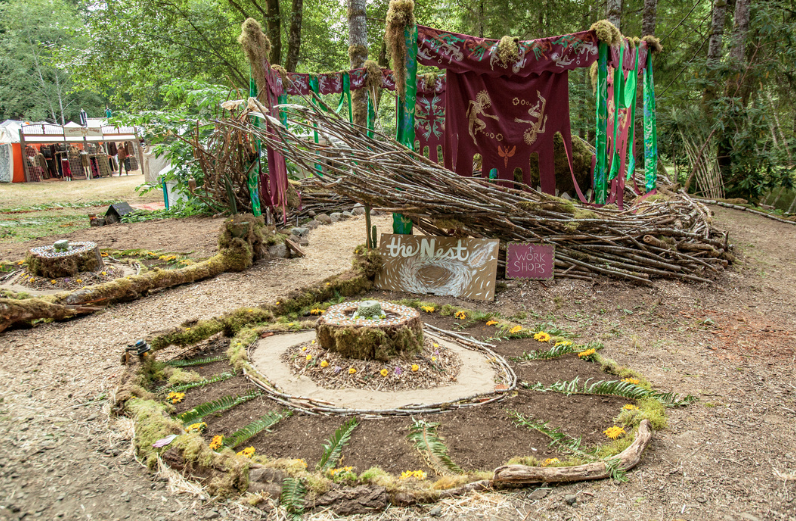
I’ve written about my visits to the Beloved Festival in the past. (that’s a link to my 2010 write-up if you’re curious about the changes over the years 🙂 This year felt a lot deeper to me than in years past, but that might also be partly where I’m at right now in my own life. Here are a few major highlights from this year.
- Mornings in the woods with campmates => Sharanam Anandama => Solsara practice daily. That’s quite a combo and I’ve been trying to make it happen on every Beloved day for years. Usually I get to 2/3’s. But this year I was able to catch a little of both each day. Solsara happens in Portland and Eugene regularly – a great, accessible personal growth practice (featuring Carrie and Larry!)
- Sara Tone and friends and how they called in the directions and opened and closed the festival. This felt like the most profound opening and closing ceremonies I can remember. People seemed more focused and attentive than I can remember them – and Sara Tone and Michael Meade both shared few but profound wisdom with all of us – setting the tone for the festival ahead. The magic of facing towards the mountains in each direction – Tahoma, Wy’East, Shasta, and Fuji (with a deviation to focus on Pele on the Big Island this year which was new…) were powerful! We also sing together “medicine for the mountain” and Sara Tone calls out all of the native tribes that were or are based in each area before we sing – it’s very profound and powerful. If I can find a video of this, I would be glad to share it, here.
- Seeing the master guitarist and songwriter, Peter Rowan on the Tree stage was a big highlight for me. Peter’s been such a big part of my life over the years – performing on Old and In the Way and in so many other arrangements that his voice resonates deep in my soul
- Seeing old friends. This year had a special aspect to it for me – I feel like a lot of people I hadn’t seen in 2-3 years decided to return and visit again. That was special as I also notice that many in my tribe that used to camp together have stopped attending festivals more and more – so, it’s hard to have that posse feeling when that happens. I also enjoyed making some new friends – Patty and Mike from Connecticut – who flew across the country to attend their first Beloved! (get in touch, ya’all!).
- Whoever started the creation of the vulnerable signs and parade (vulnerability rally) – that was a beautiful effort and reminds me of something that happened at WDS this year. I’m referring to this talk by Yes, Yes, Marsha.
- The music – so much great world music. I’m not sure how long this will stay up, but here’s this year’s line-up. I don’t usually attend festivals on who’s playing – I’m generally pretty happy with organizers’ choices and this year felt like an incredible offering. Angélique Kidjo playing Talking Heads Remain in Light? Over the top fun! Ayla Nereo? Wonderful!
- Sound: generally better over the years and this year was probably the easiest on my ears. That said, it’s often still way too loud – Blackalicious, for instance, was too loud for human consumption. Please – it never needs to be that loud. My friend suggests walking out into the audience with a decibel meter and seeing what the levels are. Thanks.
- Most of the lighting at Beloved is glorious. And, there are bright lights that come out towards the audience at the Purple dome – I wish those would be turned off or turned down, or out of audience’s eyes. Also, the blaring headlight bright lights that shined out onto the audience from the main stage – I don’t like those at all. They are jarring and I don’t like the trend of the way these are being used at festivals.
- The art: particularly the natural installations I mentioned above – but also all the lighting and fabrics and thought put into making the festival grounds beautiful, festive and sacred. The alters on either side of the main stage were breathtaking and a great reminder of how to mix the divine with a festival.
- More photos by Melissa Robin, and Andrew Paul
- th Beloved! – Spotify Playlist of this year’s artists!
I’ll probably add to the list of highlights as I think of them. Here are a few improvements I’d like to make for Beloved Festival’s 12th year. The festival already does so much right it’s hard to even consider posing some suggestions, but after 20 years as a software tester, I think it’s part of my DNA to share bugs with the hope that developers will improve the software 🙂
- The new composting toilets are world-class. I’m not sure where to put more of them, but a couple more either where they are currently, or one more bank behind medical wouldn’t hurt. Also, Herinals like at OCF would be a nice addition.
- I arrived on Thursday for early entry and spent about an hour on a hillside slowly moving towards a parking spot. I’m not sure what the solution is, but I’ve had easier entries in the past. I was parking and camping in the Far Mosque area (hard parking) and if there had been a couple more traffic people I believe I would have been parked quicker. There seemed to be an issue with people coming out while people were coming in, plus only one person was moderating a long line-up of cars. Anyway, not sure about the solution here, but imagine it can be improved.
- Having the Purple Star Dome where it was made workshops there hard to follow due to the sound from the main stage. Again, not sure where the best location would be.
- I missed the Grove stage (sound healing) altogether this year – having that so far from the main area .. hmmm. How about @ the Gazebo?
I’ll add to this list as I think of things, but the improvements for the Beloved Festival are probably well-known by the organizers and are nothing like the ones I’ve written up for Strummit. Overall, this year’s Beloved Festival is something I’m still chewing on and digesting. I still haven’t taken my wristlet off which is usually a sign to me that something was remarkable 🙂 In fact, Beloved is the one festival which I see people leaving their wristlets on for a year or more – which tells you something. Early Bird tickets usually go on sale for Beloved in the Spring – join their email list and perhaps we’ll share a dance there next year! Also, there’s a somewhat active FB group if you’d like to hear about other events and connect with other Beloveds throughout the year.
Thanks for reading and I look forward to your feedback/comments to me, or below.
Albert Kaufman
PS – did I mention I found a new place to dance (face altered by Maitrea)? Oh, and I skipped the word LOVE. Love is a big part of this festival – add in love. Loved the food. Loved the rain (fresh air). Loved the people I camped with. Loved the ride to the festival. Loved the ride home. Love thinking about Beloved. That.
PPS – The Economist weighed in this year.
